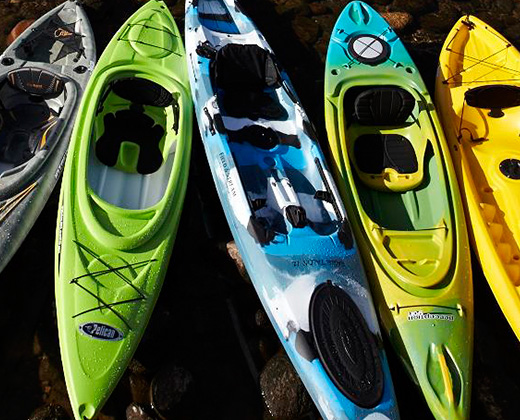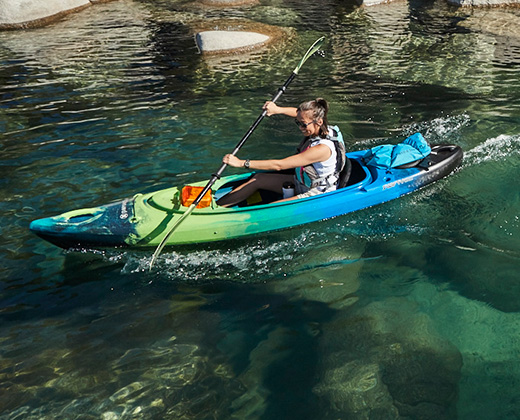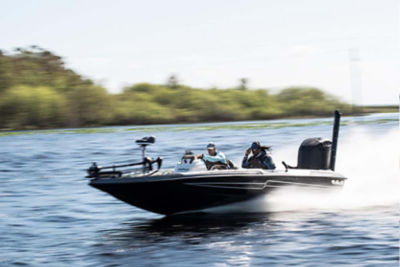How to Care for Your Kayak After the Season
Take the necessary steps to clean and store your kayak properly at the end of each season courtesy of Pro Tips.

Taking your kayak out on the water can be the perfect cure when you’re craving a relaxing day. No matter if you are kayaking through waves on the ocean, moving along on a tranquil lake or paddling down a rustic river, kayaking can be the perfect excuse to get out there and enjoy the great outdoors.
But when the seasons change and cold weather enters your area, you’ll want to store your kayak with care so it will be ready for all of your treks next season. But what is the best way to prepare your kayak for the offseason?
DICK’S Pro Tips is here with the information you need.
PRE-STORAGE CARE
Make sure to give your kayak a good cleaning with water and light soap to remove any built-up dirt and grime. Make sure to clean both the inside and outside and allow it to dry before storing it. Don’t allow water to sit in the hull of your boat. If you store your boat outside, the expansion and contraction of water freezing could damage your kayak.
You can also apply a sun-protective spray to hard-shell kayaks to help protect them from the damaging effects of UV light. This can be important to apply on both the inside and outside of your boat.
Don’t forget to take care of the kayak’s accessories, too. If you are planning on long-term storage, make sure to rinse the paddle, spray skirt, float bags and bilge pump. Find a place where you can store these items indoors. If your kayak has a float tank plug, remove it.
Before storing, consider oiling any metal parts of the kayak. You should also tighten any screws or bolts and check the hull and deck for damage. You will tackle some of these tasks before the season starts, but it doesn’t hurt to get a jump on things before storing your kayak away.
Also, it’s important that you don’t store your kayak with the cockpit uncovered. No matter if you are storing the kayak inside or outside, an open cockpit can be an invitation for small mammals, spiders and insects to make it their home. You can find cockpit covers to help make sure the inside of your kayak stays critter-free.
WHERE TO STORE IT?
There are several factors to keep in mind when deciding where to store your kayak.
Depending on your location and the type of kayak, it is imperative to consider sunlight, moisture, heat and cold. You will also want to make sure to consider the ease of access. Storing your kayak in a difficult-to-reach place can make you less likely to use it.
You can choose to store your kayak indoors or outdoors. Consider:
INDOOR KAYAK STORAGE
If you have the room, keeping your kayak indoors is the best option, as this will protect it from the elements better.
- A garage can be a convenient storage area. You can also put your kayak in a shed or spare room in your home.
- Keep your kayak away from windows. Both sunlight and moisture can cause damage to a kayak.
- Keep your kayak away from heat sources. Excessive heat can damage your kayak.
OUTDOOR KAYAK STORAGE
You can store a kayak outside in locations like under a deck or beneath a tarp.
- Storing your kayak in a shady spot can protect it from UV rays and heat.
- Even if stored in a shady area, a weather-resistant tarp or kayak cover could help protect your kayak from moisture, UV rays, sand, dust, bugs and animals. Some kayakers will cover their kayak with both a tarp and a kayak cover.
- Position any tarp you use like a tent over your vessel. This will allow any rain or snow to slide off instead of sitting directly on your kayak. Allowing the tarp to sit directly on the kayak can lead to mold or fungal growth.
Remember that if you store your kayak outside, you will need to take theft protection into account. Kayaks are a considerable investment, so taking steps to protect it from being stolen is a must.
- Keep your kayak hidden from view.
- Position your boat so it is difficult to move quickly.
- Use a security cable to attach the boat to a post or building.
You want to be careful about leaving your kayak on the ground for extended periods of time as this can cause damage. To help combat that, there are several indoor and outdoor storage options to choose from. Check out these kayak storage options to see which one best fits your space.
If you have limited space to store a kayak, consider purchasing an inflatable model. This is a space-efficient option, as an inflatable kayak can fold into the size of a backpack or a duffel bag, depending on the size.
To get the most out of your boat, you will want to give it the right care once the season over. By properly maintaining and storing your kayak, you’ll be ready to hit the water for your next paddling adventure when warm temperatures return.








